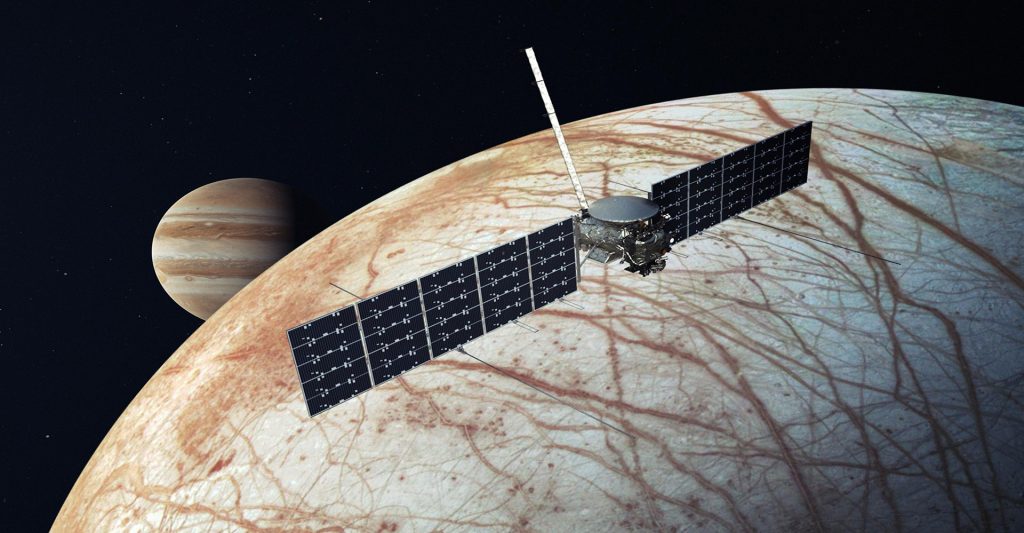Scientists have developed a method to search for cellular life on Europa, a moon of Jupiter, that involves analyzing grains of ice using the Surface Dust Analyzer (SUDA) on NASA’s Europa Clipper probe that is scheduled for the 2030s. The process, known as impact ionization mass spectrometry, focuses on single ice grains to potentially identify concentrations of the ingredients of a single cell. This technique of looking for chemical traces of life in plumes of ice grains rising from Europa is based on observations made during the Cassini mission to Saturn of organic compounds in Enceladus’ ice plumes and the potential for a similar composition on Europa.
The capabilities of the SUDA instrument were tested using simulations in the lab, where researchers were able to detect the chemical signatures of bacteria in water droplets containing cellular material. Anion measurements were particularly successful in identifying fatty acids that are known to form in bacterial cells. Findings from these experiments will be used to inform the operations of the Europa Clipper mission when it launches in 2030. The potential for the icy shell of Europa to be more than 20 kilometers thick raises the possibility that layers of ice turning over could indicate regions where material from the ocean may be transported to the surface for analysis by instruments on Europa Clipper.
The researchers working on the study acknowledge that instruments with similar capabilities to SUDA could be employed on future missions to other moons and asteroids, including Enceladus, the Interstellar Mapping and Acceleration Probe, and Japan’s DESTINY+ mission to the asteroid Phaeton. The technology could enable scientists to identify cellular material in a single ice grain, paving the way for future missions to explore potential signs of life on moons and celestial bodies beyond Europa. The development of this technique provides a glimpse into how advancements in technology are opening up new possibilities for exploring extraterrestrial oceans that may be rich in organic compounds.
The potential discovery of microbial life on Europa or Enceladus could provide groundbreaking insights into the existence of life beyond Earth. The confirmed ability of impact ionization mass spectrometers like SUDA to identify cellular material in ice grains is a significant step towards unlocking the mysteries of these distant icy worlds. The findings from studies conducted by scientists and researchers, detailed in the published research paper, offer a glimpse into the cutting-edge technologies being developed for space exploration missions to search for life in our solar system and beyond. The implications of these discoveries may have far-reaching impacts on our understanding of the universe and the potential for habitable environments beyond our home planet.
Ultimately, the research conducted by the team led by Fabian Klenner reveals the promising prospects of identifying cellular material in ice grains from moons like Europa and Enceladus. The innovative approach to detecting potential signs of life in the plumes of ice rising from these icy moons represents a crucial development in the search for extraterrestrial life. As space agencies prepare for upcoming missions to explore these distant worlds, the advancements in technology and scientific research provide hope for unraveling the mysteries of the universe and answering the age-old question of whether we are alone in the cosmos. The potential implications of these findings are vast and underscore the importance of continued exploration and discovery in the realm of astrobiology.















